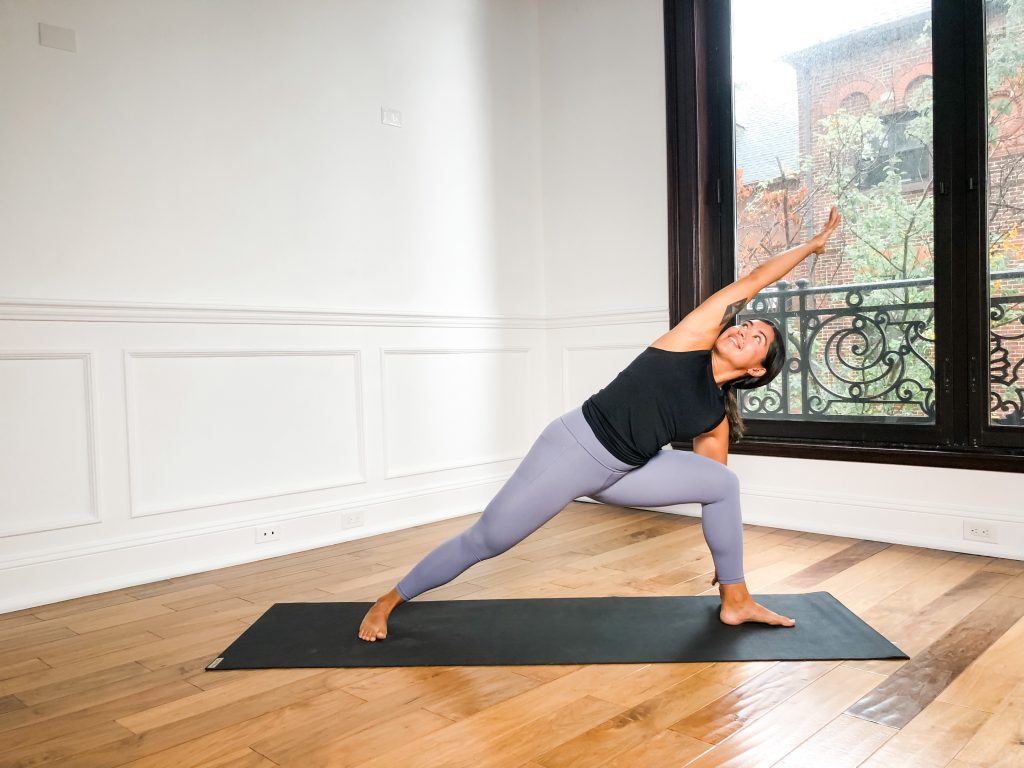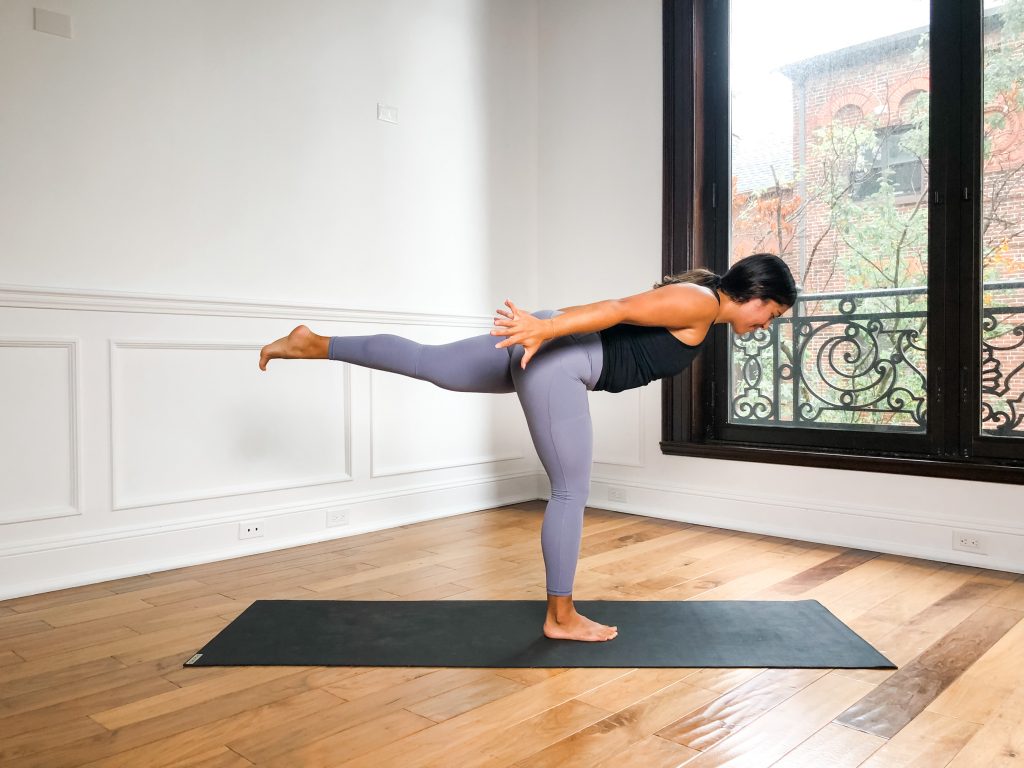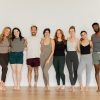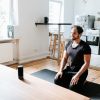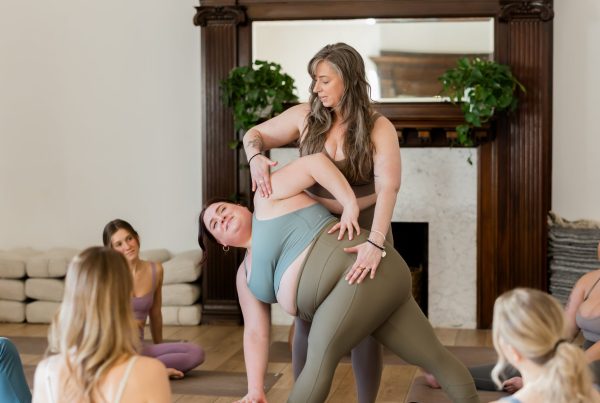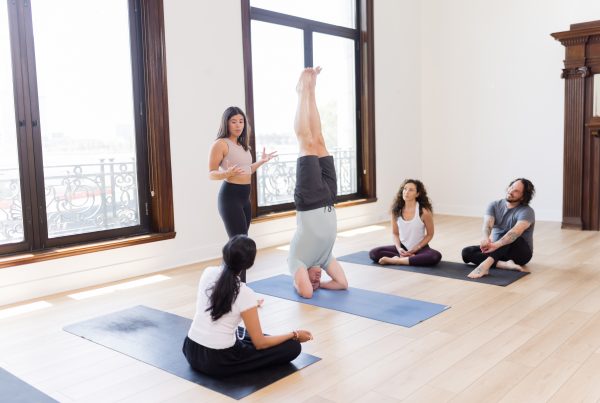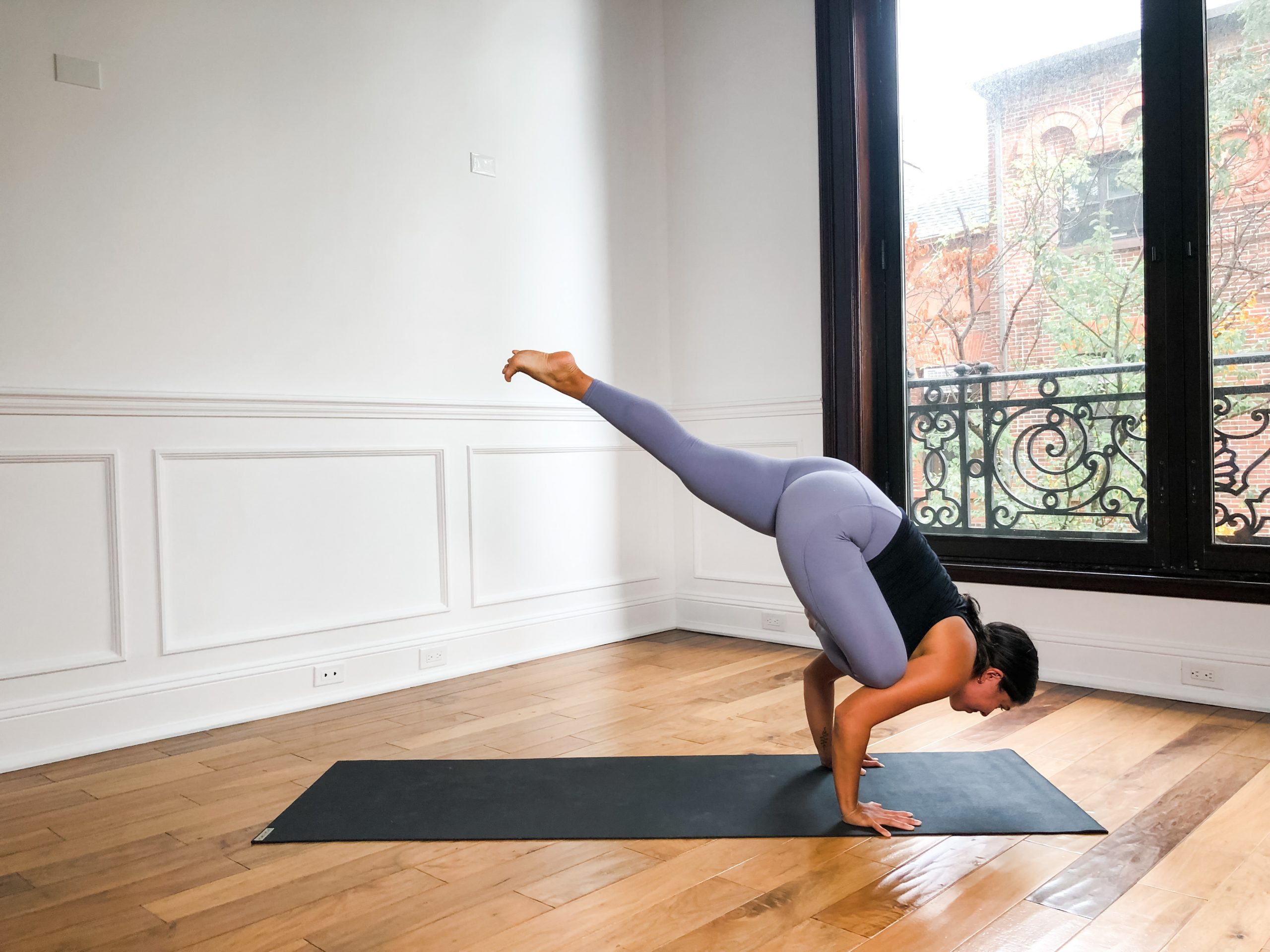
According to Anodea Judith in her book Eastern Body, Western Mind, “A chakra is a center of organization that receives, assimilates, and expresses life-force energy.”
Today we’ll begin our Journey Through the Chakras within the context of our weekly class themes. Chakra translated to English means “wheel” or “disk.” You can think of it as a spinning wheel of energy which moves prana (life force energy) through the body.
There are 7 chakras which go from the lowest frequency and most grounding (first chakra) to the highest frequency and most ethereal (seventh chakra). Today we’ll be discussing the root chakra, in Sanskrit known as Muladhara Chakra.
The location of the first chakra is at the base of the spine at the tailbone.
Root Chakra’s areas of concentration are:
- Survival
- Organization
- Boundaries
- Solidity
- Consistency
This chakra sets the foundation for the rest of the chakra system, establishing the “roots” of the energetic self.
A healthy first chakra is established when one’s survival needs are met so that we can feel safe and secure thereby giving us the ability to relax. This includes having a roof over our heads and a place to call home, having food to eat and water to drink, ensuring our physical form is fit and healthy, and having a stable income to support ourselves and any dependents. When survival is threatened we’re at risk of remaining in a hyper-vigilant state which can lead to feelings of fear or hopelessness.
The lesson in the first chakra lies in our ability to deal with fear in service of healing, grounding, and setting solid ground to move forward. Keep in mind, life is not and will most likely never be absent of fear. But the power lies in our ability to respond to such an emotion.
Root Chakra + Flying Pigeon Pose
Most arm balances such as flying pigeon lie within the forward folding family as well as the arm balancing family. In this aspect, the class will support a more “grounding” energy. Additionally, flying pigeon requires a solid ground and working through fear to not only balance the shin on the upper arms, but to extending the back leg while reaching the chest and head forward.
Supporting Pose 1: Pigeon on the Back (Kapotanasana)
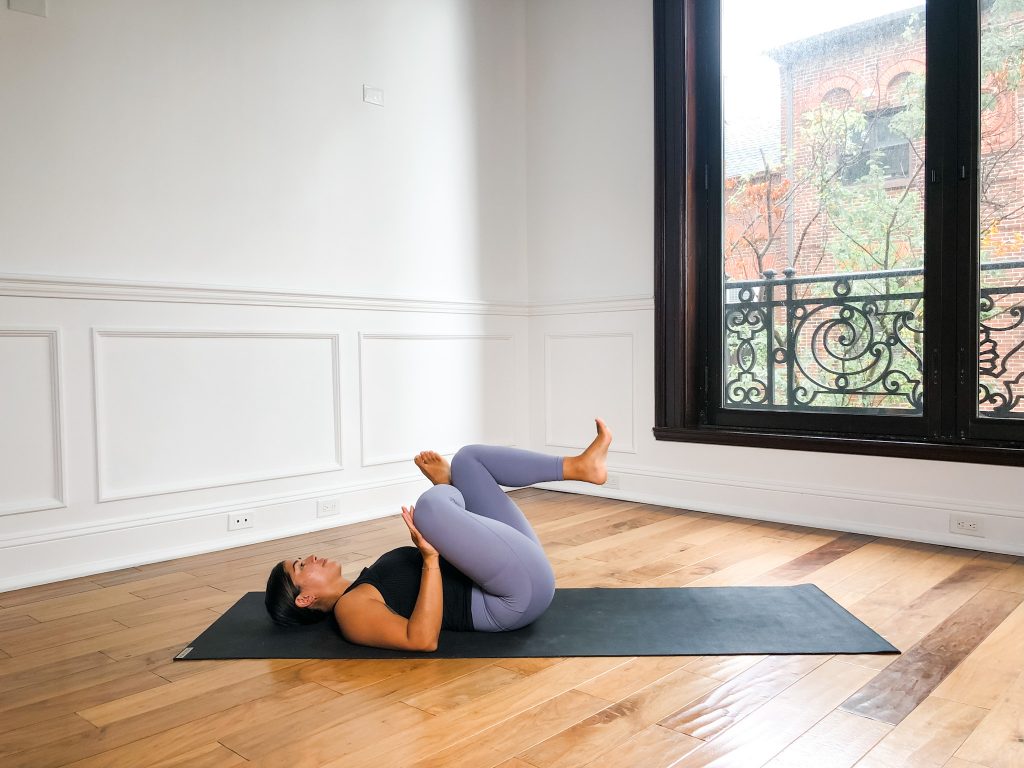
Pigeon on the back and sleeping pigeon (from the front side of the body) are both appropriate postures for preparing for flying pigeon. This variation on the back is generally a bit more accessible as participants can moderate the stretch with the arms and the postural muscles are removed since it is a supine position. Both variations you can emphasize pressing the shin forward.
- Lie on your back with your knees bent and soles of the feet on the ground.
- Hug the right knee in towards your chest.
- Externally rotate the right leg at the hip and then bend your knee to place the right ankle across the left thigh.
- Either leave your left foot on the floor or lift your legs up to intensify the stretch. You can take your hands to your left hamstring, your left and right hamstring, or left shin. Another option is to place the left foot on a wall or block.
- As you breathe and deepen the stretch, press the right shin forward so there is pressure from the right shin into the left thigh.
Supporting Pose 2: Extended Side Angle (Utthita Parsvakonasana)
I like this variation of extended side angle with the hand on the ground on the inside of the leg because it gets the torso, leg, and arm into a close relationship with one another. This close relationship (as in all the body parts are in a tight and close proximity to one another) is seen in flying pigeon. Furthermore, the front bent leg can teach the action of pressing the shin forward while the back leg can teach the energy necessary to extend and reach through the back leg/foot.
- From warrior II, lean the torso to side so it’s close to the front thigh.
- Lower the hips with the bending of the right knee to press the shin forward and press the left thigh back.
- Take the right hand down the ground on the inside of the right foot and press the upper arm into the leg.
- Press back the inner right thigh to the right upper arm to turn the torso from right to left.
- Reach the top arm over the ear to the front of the room.
Supporting Pose 3: Warrior III (Virabhadrasana III)
Warrior III is the perfect pose to really hone in on the energy needed to lift the back leg in flying pigeon.
- From high lunge, hinge the torso forward.
- Absorb the weight onto the front standing leg, in this case the right leg.
- Shift forward and use the posterior muscles of the left leg to lift the leg to hip height. The foot and leg muscles need to be toned and active in order to efficiently lift and control the leg.
- Spread the left toes as you press through the four corners of the right foot.
- Take the arms forward, bring the palms together, and try to straighten the arms. In arm balancing, the palms need to press down and the arms should have the sense of pressing the floor away to straighten the arms (even if the arms are bent in the peak pose).
Peak Pose: Flying Pigeon (Eka Pada Galavasana)
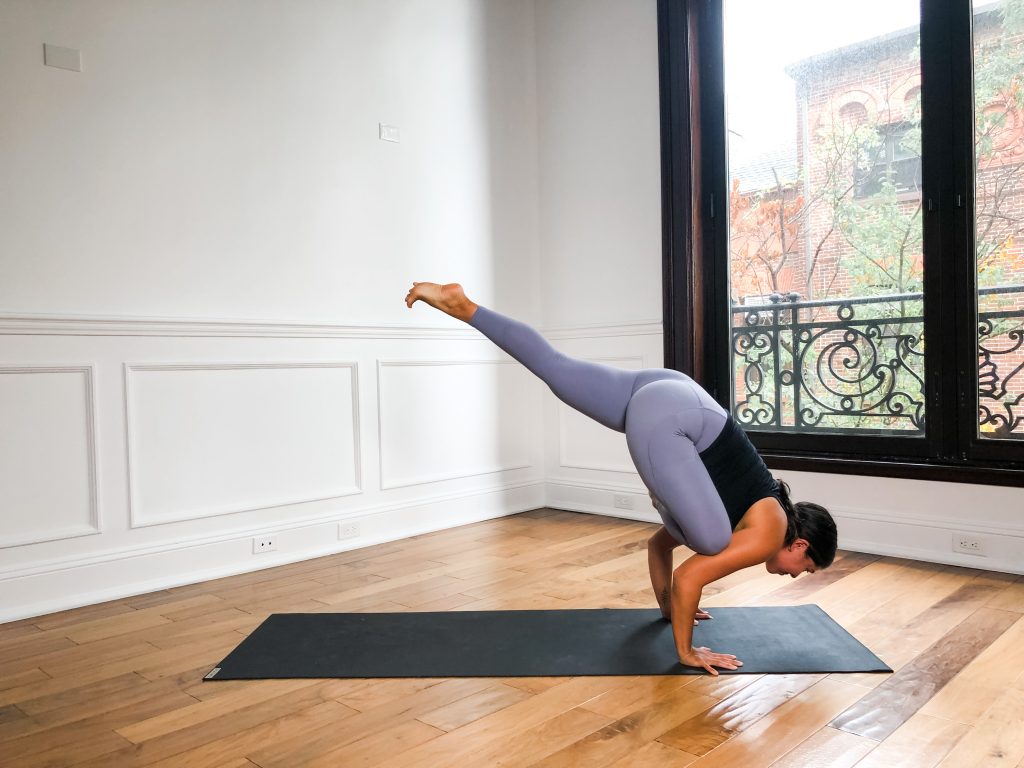
- Come into a figure four chair pose with the left leg as the standing leg and the right ankle across the left thigh.
- Bend the left knee and hinge at the hips enough to place the hands flat to the ground or to blocks if the ground is too far away. Hand placement should be right under the shin so the weight of the body can be lowered down onto the arms.
- If the arms are too far ahead of the leg, the body will collapse to the floor.
- Bend the elbows and keeping the right leg close to the torso, place the right shin across the upper arms.
- Press the right shin down into the upper arms as you press the hands down into the ground and the upper arms back into the shin.
- Press the floor away as you pull the navel in and lift the left heel towards your bum.
- Shift forward with your chest as you reach the left leg into the air behind you. Left foot and leg needs to be toned and active.


